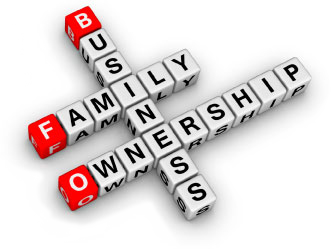It’s generally accepted that across Australia the kitchen and bathroom industry is made up of many family businesses. In fact the more I travel and meet people in this sector, the more I see second and third generation owners, (which is great) today managing businesses their parents and sometimes grandparents started. As a cottage industry we are somewhat at opposite ends of the corporate structure compared to our European cousins,
So in this, a two part editorial, I intend to look at not only the challenges that owners face today in a family business but also how best they can strive to survive and prosper.
There’s a very well known Mexican saying – “Padre noble, hijo rico, nieto pobre” – it means “Father, founder of the company, Son rich, and Grandson poor”. In other words the founder works and builds a business from scratch, the son takes it over and is poorly prepared to manage and make it expand but enjoys the wealth, and the grandson inherits a dead business and, an empty bank account.
As I said to a someone recently, every organisation has a unique set of challenges, and the family business is no different. Some of the problems that exist in corporate business environments are overstated and exaggerated in a family model. As that industry passes through a variety of stages of growth with time, challenges tend to magnify with the second or subsequent generations.
So here’s a snapshot of some of the challenges the family business faces:-
- Informality – an deficiency of clear strategies and business norms for family members
- Narrow outlook – lack of outside opinions and diversity on how to operate the business.
- Lack of talent – hiring family members who are not qualified or lack the skills and abilities for the organization. Inability to fire them when it is clear they are not working out.
- Written strategy – no documented plan or long term planning including compensation problems for family members. Dividends, salaries, benefits and compensation for non-participating family members are not clearly defined or justified.
- Employment function – roles and responsibilities are not clearly defined.
- Control of operations – difficult to control other members of the family. Lack of participation in the day-to-day work and supervision required
- Emotions – family problems will affect the business. Divorce, separations, health or financial problems also create difficult political situations for the family members.
- Succession Planning – most family organizations do not have a plan for handing the power to the next generation, leading to great political conflicts and divisions. No clear plan on how to sell, close or walk away from the business and this includes long term planning to cover the necessities and realities of older members when they leave the company.

- Training. There should be a specific training program when you integrate family members into the company. This should provide specific information that related to the goals, expectations and obligations of the position.
- Communication problems. Provoked by role confusion, emotions (envy, fear, anger), political divisions or other relationship problems.
- Business valuation. No knowledge of the worth of the business, and the factors that make it valuable or decrease its value.
- Vision. Each family member sometimes has a different vision of the business and different goals.
If you have any additions, comments or otherwise we’d love to hear from you as in tomorrow’s edition of the Blog, we will look at some of the items above in more depth, and also see how to manage these issues – be you are the “Father, Son or Grandson” !!!





































